We specialise in serving headquarters of global brands, helping them cut complexity costs in strategy execution across markets and fulfil their corporate role as scale economisers and advantage accelerators. Leverage our consulting expertise, technology solutions and remote talent resources to create organisational simplicity, scalability and efficiency in multi-market operations.
Transforming global brand marketing, creative and eCommerce function into a competitive advantage
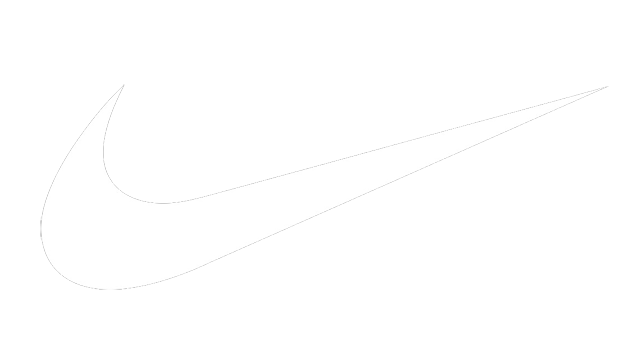 (EMEA) 14 markets
(EMEA) 14 markets
 (EMEA) 47 markets
(EMEA) 47 markets
 (EMEA) 17 markets
(EMEA) 17 markets
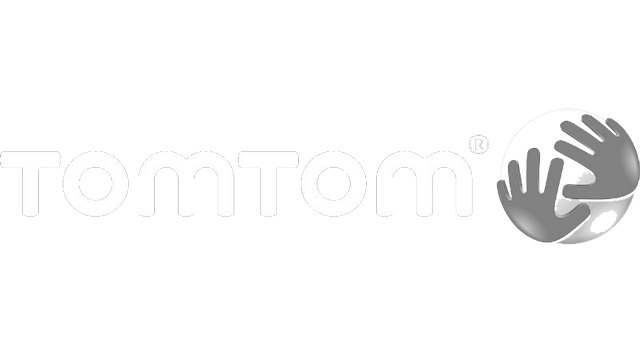 (WHQ)
(WHQ)
Following the 2007-2009 financial recession recovery, economies around the world enjoyed a decade of interrupted economic GDP growth. Fuelled by access to cheap capital, riding the wave of one of the longest economic expansions in history, companies of all sizes prioritised top line revenue growth. Whether it was through international market expansion, new product development or existing portfolio extensions, global brand organisations raced to capture wallets of consumers across the world and growing purchasing power of emerging markets' expanding middle class. But, the 2020 covid-19 pandemic and virus curbing lockdowns abruptly ended the decade long growth streak. Expansion plans were quickly shelved, to be replaced with painful downsizings as companies grappled with plummeting consumer demand and confidence in what the IMF (international monetary fund) called the 'worst economic downturn since the great depression".
.png)
Economic activity was either gagged or virtualised by flurry of lockdowns and travel restrictions which were altering the very fabric of market consumption and consumer behaviour.
Economic activity was either gagged or virtualised by flurry of lockdowns and travel restrictions which were altering the very fabric of market consumption and consumer behaviour. Instead of physical interactions, digital took place, and even activities which were until now impervious to previous waves of digitisation, such as grocery shopping, gym and fitness classes, now succumbed and went online. Despite the unprecedented fiscal stimulus and generous government backed furlough schemes, companies facing plummeting demand and obstructed market access were forced to adjust internal capacities. Waves of layoffs corresponded with waves of lockdowns. In an attempt to rationalise their market footprint, global organisations started restructuring programs mostly aimed on shedding staff.

Expansion plans were quickly shelved, to be replaced with painful downsizings as companies grappled with plummeting consumer demand and confidence.
The Pandemic "Big Bang" of Digital Enabled Rationalisation
The 2020 pandemic was a unique event in history, not only because it happens once in a century, but because of the creative destruction power it released in a ''big bang' explosion of digital enabled rationalisation. Namely, not only did the pandemic create an urgent need for cost rationalisation of operations because of ensuing economic decline, but it also happened at a time when productivity enabling advanced digital technology infrastructure had both widespread adoption and at a mature stage of evolution to enable a rather seamless societal shift to digital. To rephrase, if a pandemic had to happen once in a century, we were more than lucky that it happened in now and not in the age of Windows 95, dial up internet or Nokia 3310 phones.
Not only did the pandemic create an urgent need for cost rationalisation of operations because of ensuing economic decline, but it also happened at a time when productivity enabling advanced digital technology infrastructure was both widespread and at a mature stage of evolution to enable a rather seamless societal shift to digital.

First days of pandemic were days of corporate self-wonder. Both employees and senior management of global organisations were discovering that working remotely was not only possible, but also seamless and at most times more productive. Crisis induced sense of urgency drove decision process from months to hours. Projects that used to take weeks and hours of in person meetings, now took couple of lines of MS Teams chat. Unable to physically meet and collaborate demand for and adoption of productivity and virtual collaboration enabling digital tools exploded.
The business leaders report the pandemic effectively removed the main barrier to their digital transformations — business priorities
C-suite executives said COVID-19 has accelerated their digital plans by as much as a decade in a matter of months, according to a poll by McKinsey & Company. The report showing a dramatic acceleration in the digitisation of products and services as well as core internal operations like back office, production and R&D. The business leaders report the pandemic effectively removed the main barrier to their digital transformations — business priorities — because BAU (business as usual) was no longer viable. Digital adoption has taken a quantum leap at both the organisational and industry levels
Global Brand Go-To-Market Operations : Still Physical-First in B2B
While most companies, at least, partially digitised their operations or enabled digital access to end customers (B2C operations) through either own D2C or e-commerce marketplaces, they still heavily relied on physical contact for B2B customers. For example, in Apparel & Fashion industry, the presentation and show-rooming of next year's seasonal collection relied heavily on actual physical showcasing of apparel, samples and in person negotiations. A lot of retail or consumer goods brands, even those with global reach, still work with their wholesale partners through email / excel sheet product ordering without having digital platforms / digital versions of order books.

Live industry trade-shows were inevitable go-to-market element for manufacturers - ideal places to showcase their production capabilities, design solutions, meet & discuss with partners and customers, seal deals. In person visits of Pharma industry sales representatives to healthcare professionals (HCP) were so indisputable element of go-to-market that most of the industry is built around it.
Facing the revenue and demand decline in almost all the markets at the same time with lingering uncertainty about the length of the physical-first market access obstruction, global brand organisations scrambled to digitise their go-to-market models and operations.
In natural economic downturns and contractions, global brand organisations and their global market presence endows them inherent risk hedging competitive advantage - any regional or country level market disruption or decline is easily, at least, partially, offset by other regional business market and revenues. So, for example, if there's a financial crisis in Europe, North American or Asian markets operations (or growth) will offset some if not of all of the Europe's market decline. The covid-19 pandemic, however, erased this advantage as the lockdowns and ensuing economic decline rummaged through entire world almost at the same size (with exception of China).
.jpg)
Facing revenue and demand decline in almost all the markets at the same time, with lingering uncertainty about the length of the physical-first market access obstruction, global brand organisations scrambled to digitise their go-to-market models and operations.
Post-Pandemic Way Forward : Digital Enabled Rationalisation of Global Brand Go-To-Market Operations
Those who have invested in digital transformation efforts, were now bearing fruits of their labor. About 6 years ago Tommy Hilfiger's CEO leveraged his sales background to identify that the way they were managing merchandising and selling was leading to massive inefficiencies and decided that this would be the immediate priority for digitalisation. Since then, the company, which is owned by PVH, has reinvented how its collections are sold to department stores, fostering a move away from physical samples into digital showrooms.
.jpg)
Source : PVH Hatch Youtube Channel
It took the pandemic knock on the door, for GROHE AG, a global brand for complete bathroom solutions and kitchen fittings, to take the big (and inevitable) leap in go-to-market model and operations to replace their (now still impossible to do) industry trade show attendance with a new digital experience and go-to-market platform - "Grohe X".
Source : Grohe AG Youtube Channel
Another global brand, this time from sporting industry, adidas is digitising its go-to-market operations and building a digital showroom as well for their wholesale customers. Adidas is shaping the new B2B customer experience with VR 3D environments, 3D and AR products, Windows and iOS applications.
adidas is not only taking the opportunity of digital enabled rationalisation of processes through digitisation of its B2B sales process and operations, but also leveraging digital to rationalise on the project resourcing and talent hiring.
.jpeg)
Interestingly enough, looking at the advertised role, one can notice it is based in India, meaning that adidas is not only taking the opportunity of digital enabled rationalisation of processes through digitisation of its B2B sales operations, but is also leveraging digital to rationalise on the costs of project resourcing and talent hiring.
Rationalising Global Brand Go-To-Market Operations Through Tailored Digital Technology Solutions & Remote (Lower Cost Country) Talent Hub Formation, Change Acceptance Facilitation through Digital Adoption Programs
Rationalisation is not a new term in business management. It is a process of reorganising and overhauling a company's operations, policies, and anything else needed to make the company more efficient. Rationalisation is intended to improve a company's profitability. Applied to go-to-market operations in global-to-local setting means looking at digital enabled ways to make the company multi market, multi-channel (B2B and B2C) access and supporting operations more efficient, and thus, more profitable.
Rationalisation of global brand go-to-market operations means looking at digital enabled ways to make the company multi-market, multi-channel (B2B and B2C) access and supporting operations more efficient and more profitable.
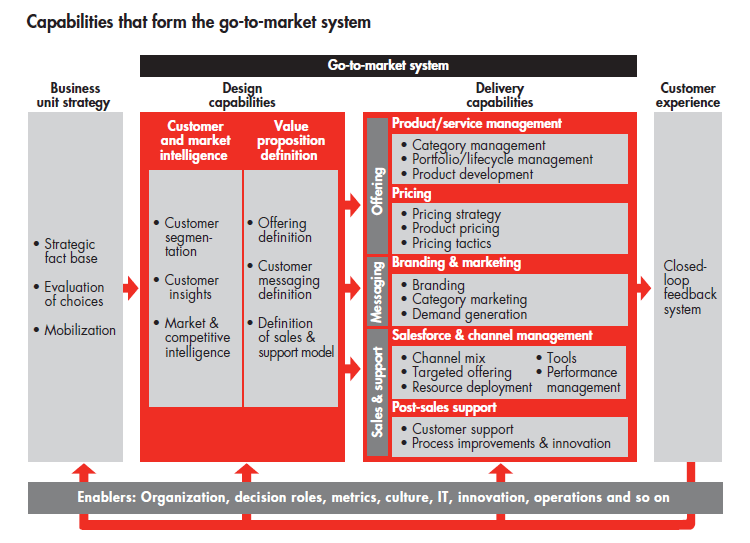
Source : Bain & Company
Digital enabled process and resource rationalisation of global brand go-to-market operations would entail digitisation of go-to-market models and operations, through tailored technology solutions design, development and implementation, but also utilisation of remote lower cost country talent whenever possible and needed. Much like adidas in the example above is leveraging India as a more cost-efficient location for development of digital solutions and supporting staff.
If everybody is working remotely, why not have a remote (lower cost) resource / talent hub and leverage digital collaboration tools to achieve geographical cost optimisation on staff costs?
Digital has enabled remote resource hubs and distributed teams long time before the pandemic, but pandemic and post-pandemic way of remote work which is here to stay, begets the obvious question : if everybody is working remotely, why not have a remote (lower cost) resource / talent hub and leverage digital collaboration tools to achieve geographical cost optimisation on staff/talent costs?
SO DIGITAL focuses on cost & operational rationalisation of global brand's go-to-market operations. We've worked with some of the leading global brands such as Nike EMEA (14 WE markets) and Uber EMEA (47 EMEA markets)
Nike EMEA stakeholder was wholesale. com brand digital team and our role involved digital enablement of tiered brand marketing & campaign content support strategy towards a complex network of e-retail partners across 14 WE countries and implementation rationalisation of seasonal brand (launch) activations for 10 categories. Uber EMEA case stakeholder was in-house brand creative / marketing agency and our role was streamlining go-to-market operations when it comes to marketing & creative content support of 47 EMEA countries based ( x time city teams) growth marketeers.
For both of these flagship clients scope involved :
1) creation of tailored made platform solution which rationalised and digitised digital brand management, activations & campaign content operations between HQs and country teams (local units/ 3rd party retail partners) & solved many operational issues present.
Nike EMEA wholesale.com brand digital use case
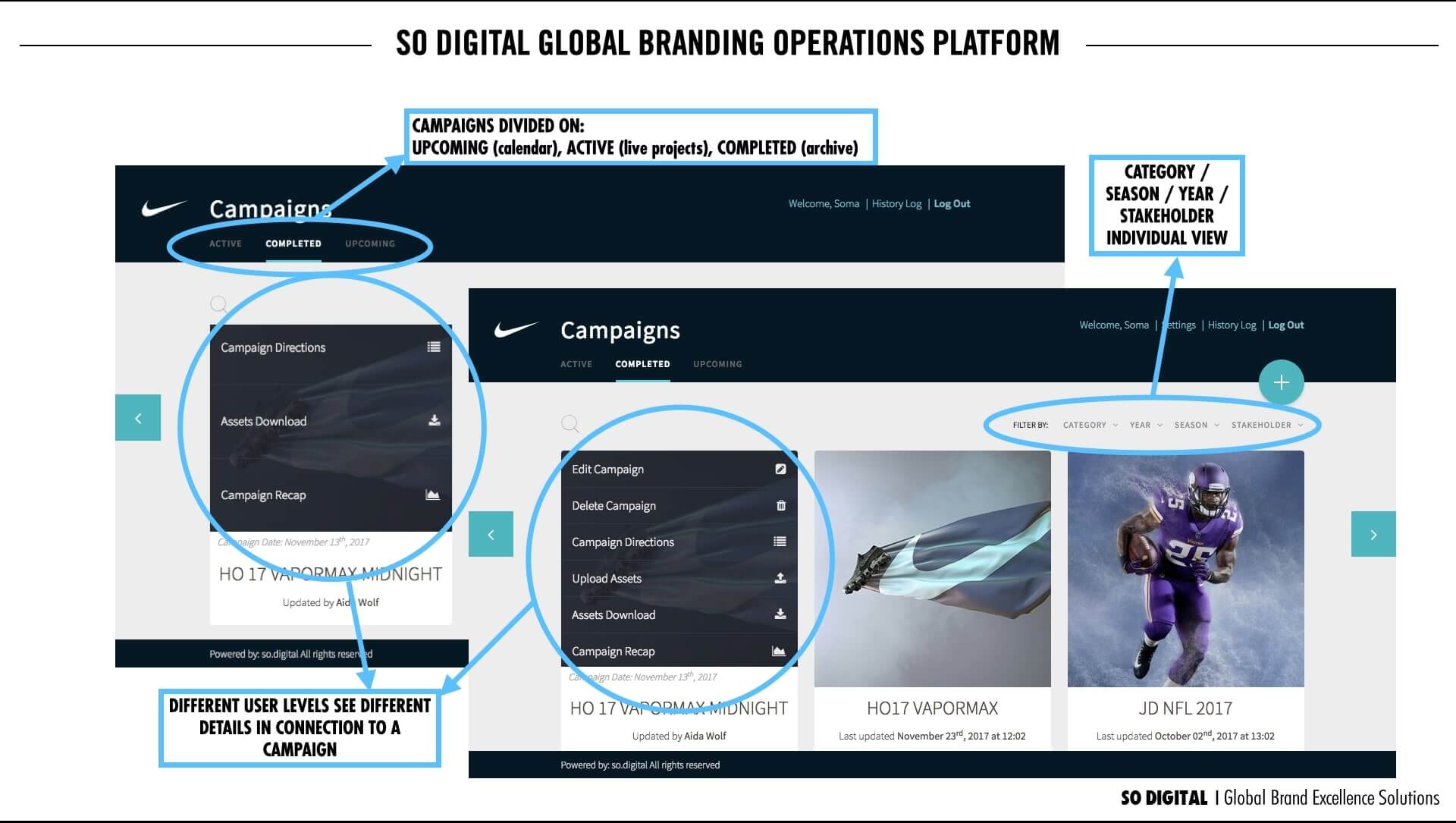
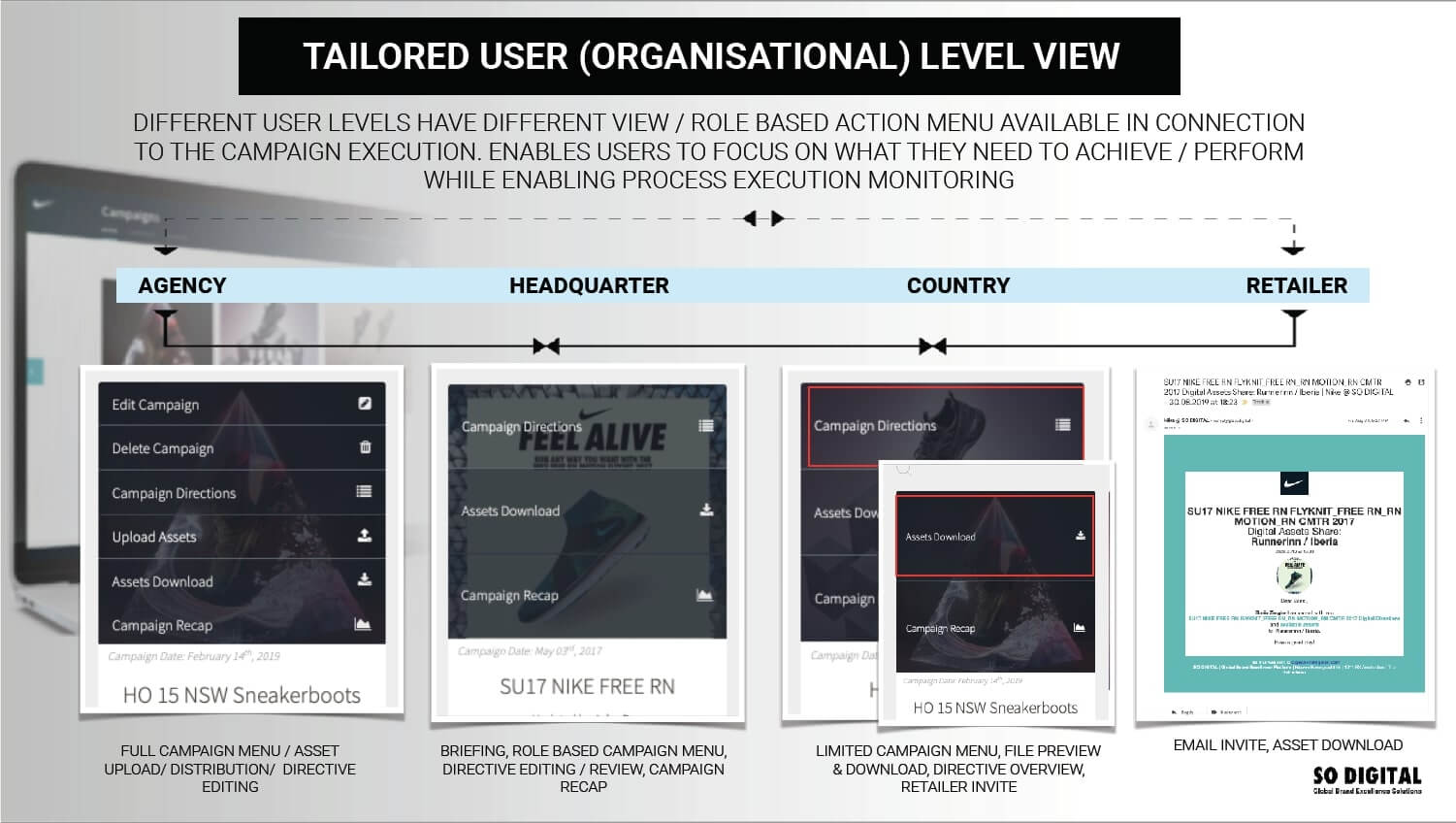
Uber EMEA in-house brand creative team use case
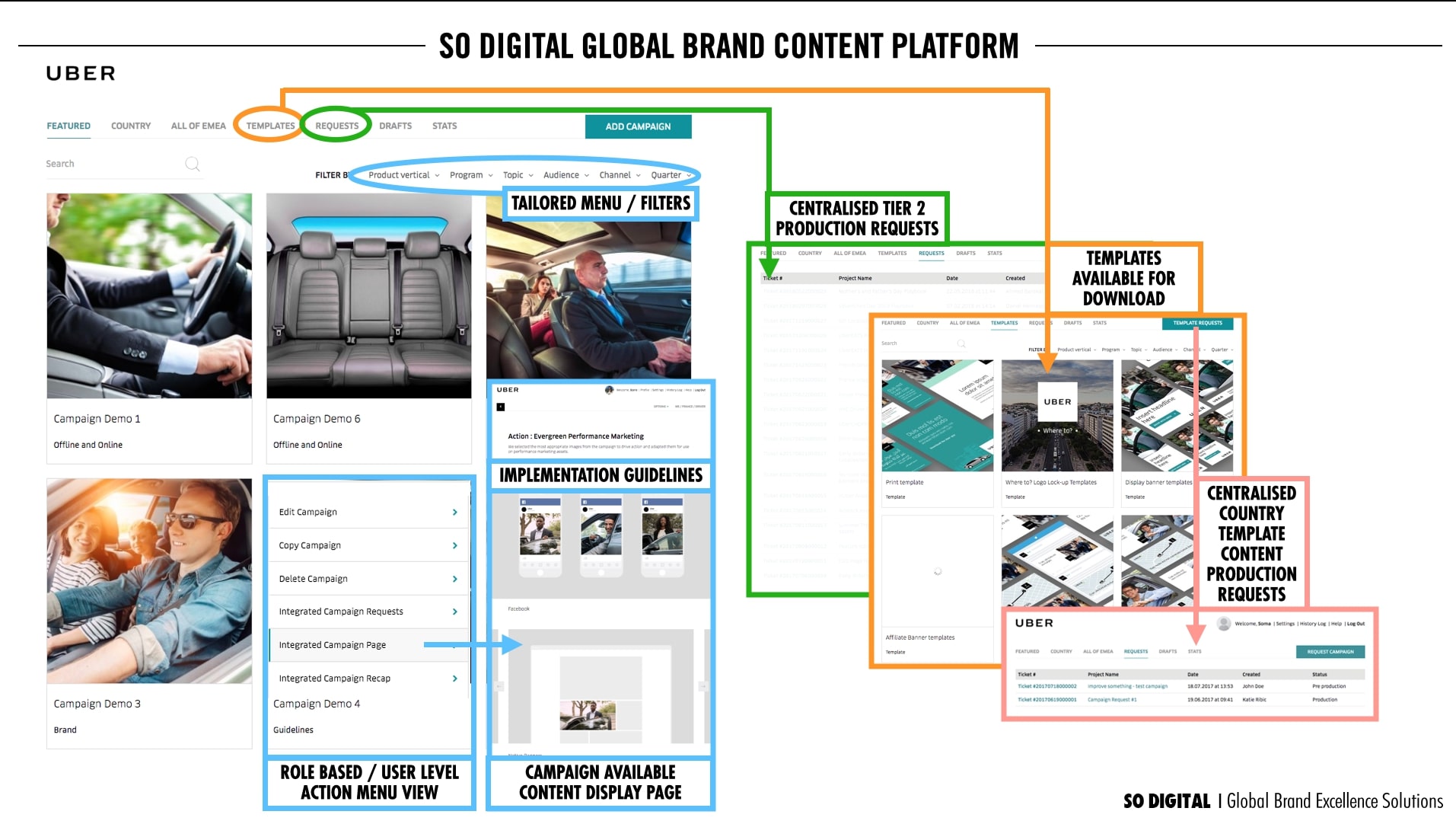
2 ) creation of a remote digital brand content factory placed at a lower cost countries, which produced large volumes of premium digital brand marketing campaign content, e-commerce content, while providing support for tiered 2, tier 3 requests and web / application development support. We've set up & operated 3 production hubs in Balkans region (Croatia, Bosnia & Herzegovina, Serbia) while providing face2face client service in Amsterdam and supporting talent (unavailable in Balkans region) form other cities such as Berlin and Barcelona.
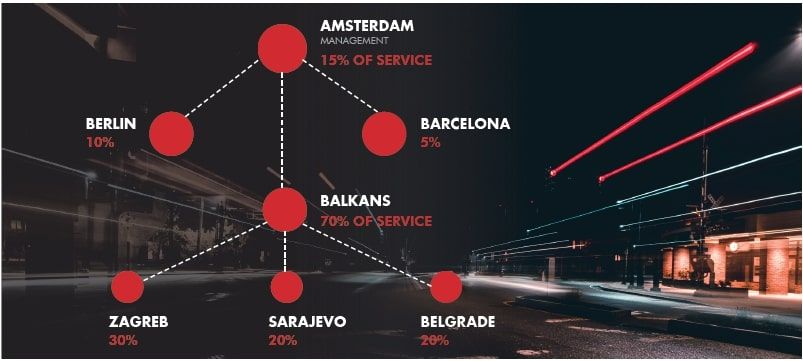
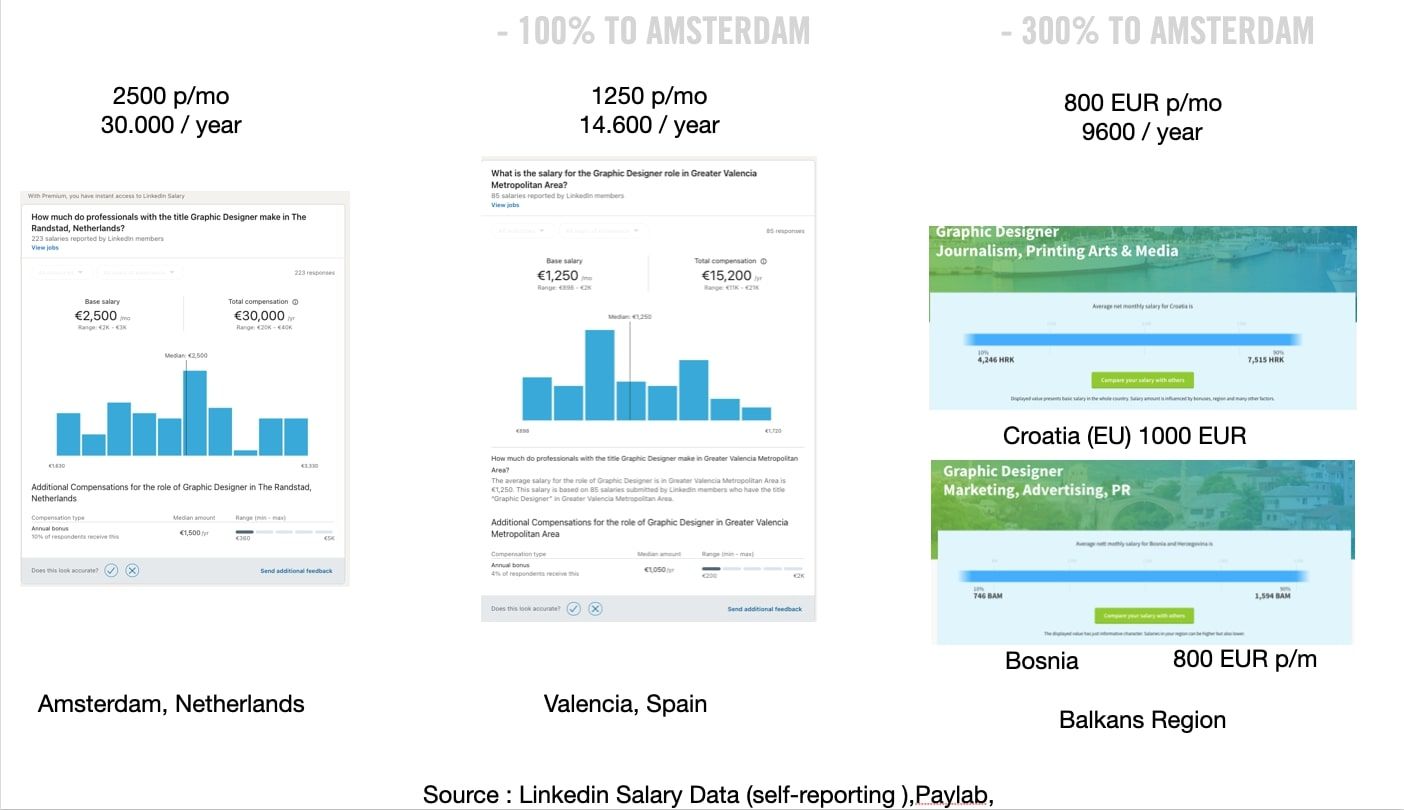
Geographical cost optimisation potential for position of a "Graphic Designer" is between 100 - 300% in 2021 between Amsterdam, Valencia and Balkan countries.
So rationalisation was done both through process & resource side of content operations.
- CLIENT CASE ACCESS
In general, as we focus on internal enablement, we are usually not in conflict with existing agency relationship and our solutions & services are industry agnostic. While technology indeed is a enabling element of rationalisation, it is not a key factor. People who accept and learn to work through digital enabled models are key factor of successful digital transformation and digital enabled rationalisation of go-to-market operations. That is why, crucial part of our approach is digital / user adoption - helping employees accept new technology tools and new ways of working.

.jpg)
.jpg)
